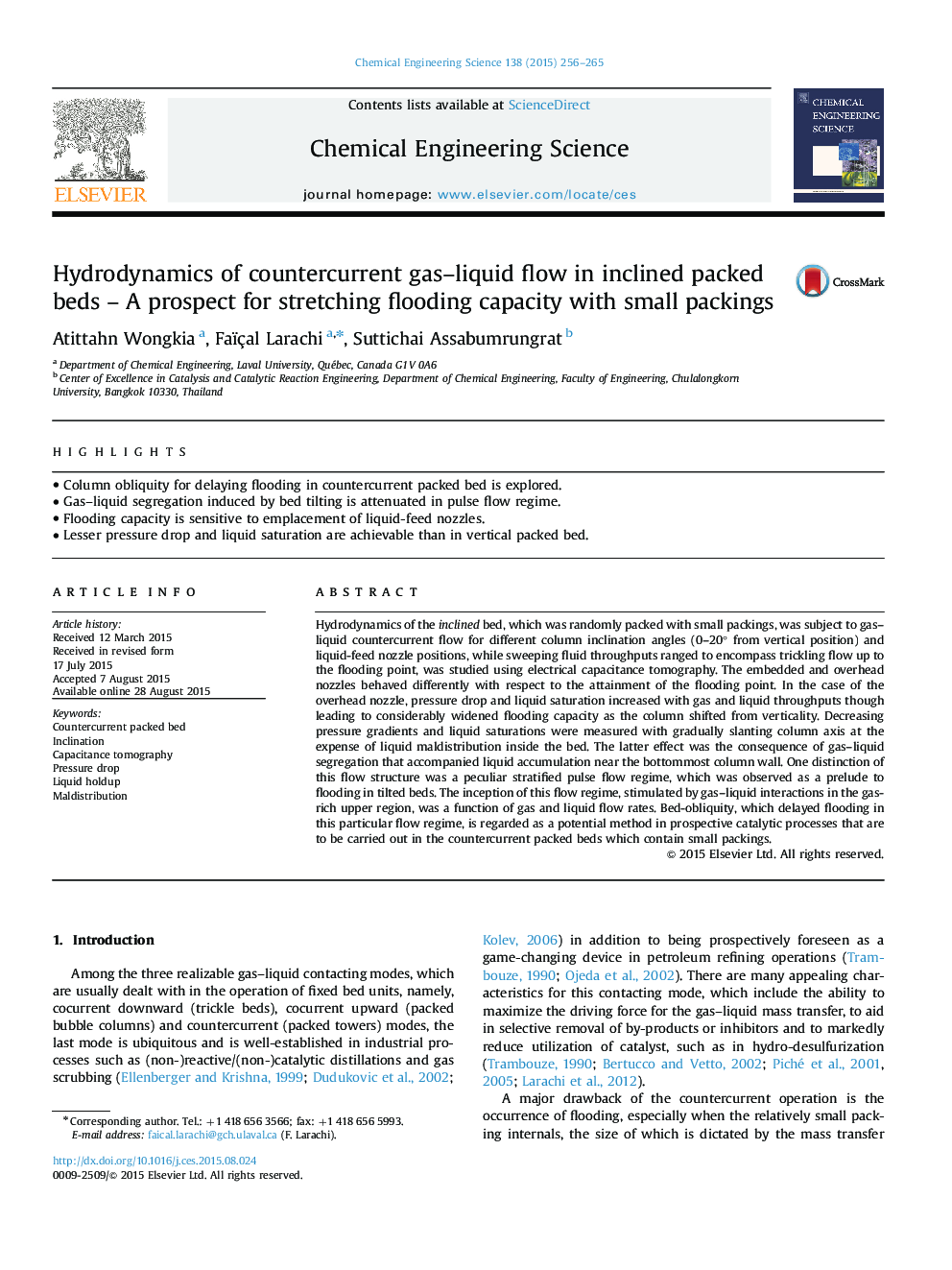| Article ID | Journal | Published Year | Pages | File Type |
|---|---|---|---|---|
| 154599 | Chemical Engineering Science | 2015 | 10 Pages |
•Column obliquity for delaying flooding in countercurrent packed bed is explored.•Gas–liquid segregation induced by bed tilting is attenuated in pulse flow regime.•Flooding capacity is sensitive to emplacement of liquid-feed nozzles.•Lesser pressure drop and liquid saturation are achievable than in vertical packed bed.
Hydrodynamics of the inclined bed, which was randomly packed with small packings, was subject to gas–liquid countercurrent flow for different column inclination angles (0–20° from vertical position) and liquid-feed nozzle positions, while sweeping fluid throughputs ranged to encompass trickling flow up to the flooding point, was studied using electrical capacitance tomography. The embedded and overhead nozzles behaved differently with respect to the attainment of the flooding point. In the case of the overhead nozzle, pressure drop and liquid saturation increased with gas and liquid throughputs though leading to considerably widened flooding capacity as the column shifted from verticality. Decreasing pressure gradients and liquid saturations were measured with gradually slanting column axis at the expense of liquid maldistribution inside the bed. The latter effect was the consequence of gas–liquid segregation that accompanied liquid accumulation near the bottommost column wall. One distinction of this flow structure was a peculiar stratified pulse flow regime, which was observed as a prelude to flooding in tilted beds. The inception of this flow regime, stimulated by gas–liquid interactions in the gas-rich upper region, was a function of gas and liquid flow rates. Bed-obliquity, which delayed flooding in this particular flow regime, is regarded as a potential method in prospective catalytic processes that are to be carried out in the countercurrent packed beds which contain small packings.
